Ditapis dengan

Efficient consumer response: managing the supply chain for “ultimate” con…
Presents a case study of the marketing strategy of Birds Eye Wall’s and its focus on functional and service-related aspects of its trading relationships. Stresses the importance of the efficient consumer response process towards achieving both customer satisfaction and business efficiency and success. Details the use of extensive research and data analysis to forecast, measure, model and rev…
- Edisi
- Volume 1 · Number 2 · 1996 · pp. 11-14
- ISBN/ISSN
- 1359-8546
- Deskripsi Fisik
- 6 p .
- Judul Seri
- Supply Chain Management: An International Journal
- No. Panggil
- ATC MGPEA e C.1

Managing port-related supply chain disruptions (PSCDs) : a management model a…
In the contemporary port business environment, port resilience is of paramount importance for supply chain continuity. A result of the increased integration of ports into supply chains is ports’ potential to supply chain disruptions. This paper introduces a PSCD management model that incorporates the application of risk management, business continuity management, and quality management theori…
- Edisi
- VOL. 43, NO. 4, 436–455
- ISBN/ISSN
- 1464-5254
- Deskripsi Fisik
- 21 p.
- Judul Seri
- Maritime Policy & Management
- No. Panggil
- ATC PO LOH m
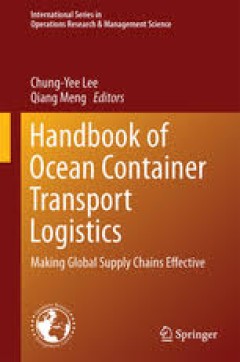
Handbook of ocean container transport logistics: making global supply chains …
- Edisi
- -
- ISBN/ISSN
- 2214-7934
- Deskripsi Fisik
- xvii, 552 p.
- Judul Seri
- -
- No. Panggil
- TXT LO LEE h
- Edisi
- -
- ISBN/ISSN
- 2214-7934
- Deskripsi Fisik
- xvii, 552 p.
- Judul Seri
- -
- No. Panggil
- TXT LO LEE h
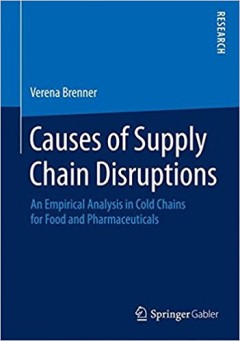
Causes of supply chain disruptions : an empirical analysis in cold chains for…
- Edisi
- -
- ISBN/ISSN
- 978-3-658-08662-6
- Deskripsi Fisik
- xvi, 323 p.
- Judul Seri
- -
- No. Panggil
- TXT LO BRE c
- Edisi
- -
- ISBN/ISSN
- 978-3-658-08662-6
- Deskripsi Fisik
- xvi, 323 p.
- Judul Seri
- -
- No. Panggil
- TXT LO BRE c

Supply chain management and transport logistics
- Edisi
- -
- ISBN/ISSN
- 978–0–203–80586–2
- Deskripsi Fisik
- -
- Judul Seri
- -
- No. Panggil
- TXT LO LIU s
- Edisi
- -
- ISBN/ISSN
- 978–0–203–80586–2
- Deskripsi Fisik
- -
- Judul Seri
- -
- No. Panggil
- TXT LO LIU s

the Palgrave handbook of humanitarian logistics and supply chain management
- Edisi
- -
- ISBN/ISSN
- 978-1-137-59099-2
- Deskripsi Fisik
- -
- Judul Seri
- -
- No. Panggil
- TXT LO KOV p
- Edisi
- -
- ISBN/ISSN
- 978-1-137-59099-2
- Deskripsi Fisik
- -
- Judul Seri
- -
- No. Panggil
- TXT LO KOV p

Port-focal logistics and global supply chains
- Edisi
- -
- ISBN/ISSN
- 978-1-137-27369-7
- Deskripsi Fisik
- xx, 240 p.
- Judul Seri
- -
- No. Panggil
- TXT LO ADO p
- Edisi
- -
- ISBN/ISSN
- 978-1-137-27369-7
- Deskripsi Fisik
- xx, 240 p.
- Judul Seri
- -
- No. Panggil
- TXT LO ADO p
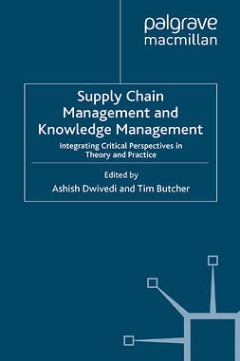
Supply chain management and knowledge management
- Edisi
- -
- ISBN/ISSN
- 978-0-230-23495-6
- Deskripsi Fisik
- xxx, 309 p.
- Judul Seri
- -
- No. Panggil
- TXT MG DWI s
- Edisi
- -
- ISBN/ISSN
- 978-0-230-23495-6
- Deskripsi Fisik
- xxx, 309 p.
- Judul Seri
- -
- No. Panggil
- TXT MG DWI s
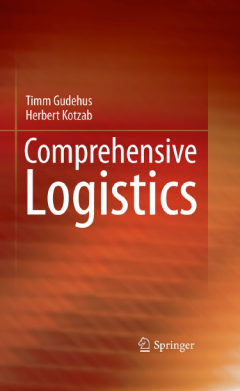
Comprehensive logistics
- Edisi
- -
- ISBN/ISSN
- 978-3-540-68652-1
- Deskripsi Fisik
- -
- Judul Seri
- -
- No. Panggil
- TXT LO KOT c
- Edisi
- -
- ISBN/ISSN
- 978-3-540-68652-1
- Deskripsi Fisik
- -
- Judul Seri
- -
- No. Panggil
- TXT LO KOT c
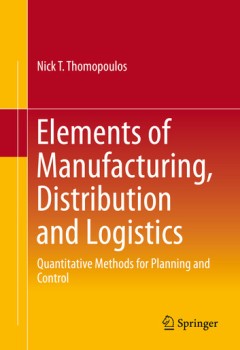
Elements of danufacturing, distribution and logistics: quantitative methods f…
- Edisi
- -
- ISBN/ISSN
- 978-3-319-26862-0
- Deskripsi Fisik
- -
- Judul Seri
- -
- No. Panggil
- TXT LO THO e
- Edisi
- -
- ISBN/ISSN
- 978-3-319-26862-0
- Deskripsi Fisik
- -
- Judul Seri
- -
- No. Panggil
- TXT LO THO e
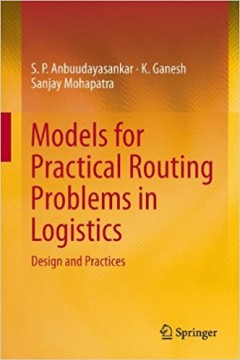
Models for practical routing problems in logistics: design and practice
- Edisi
- -
- ISBN/ISSN
- 978-3-319-05035-5
- Deskripsi Fisik
- -
- Judul Seri
- -
- No. Panggil
- TXT LO ANB m
- Edisi
- -
- ISBN/ISSN
- 978-3-319-05035-5
- Deskripsi Fisik
- -
- Judul Seri
- -
- No. Panggil
- TXT LO ANB m

Supply chain cases: leading authors, research themes and future direction
- Edisi
- -
- ISBN/ISSN
- 978-3-319-71658-9
- Deskripsi Fisik
- -
- Judul Seri
- -
- No. Panggil
- TXT LO Hil s
- Edisi
- -
- ISBN/ISSN
- 978-3-319-71658-9
- Deskripsi Fisik
- -
- Judul Seri
- -
- No. Panggil
- TXT LO Hil s
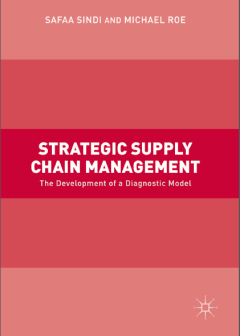
Strategic supply chain management: the development of diagnostics model
- Edisi
- -
- ISBN/ISSN
- 978-3-319-54843-2
- Deskripsi Fisik
- -
- Judul Seri
- -
- No. Panggil
- TXT MG Sin s
- Edisi
- -
- ISBN/ISSN
- 978-3-319-54843-2
- Deskripsi Fisik
- -
- Judul Seri
- -
- No. Panggil
- TXT MG Sin s
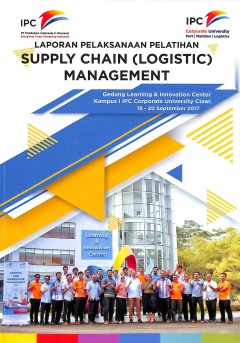
Laporan Pelaksanaan Pelatihan : Supply Chain (Logistic) Management
- Edisi
- 18 -20 September 2017
- ISBN/ISSN
- -
- Deskripsi Fisik
- 15 p., + atc., 21 cm.
- Judul Seri
- -
- No. Panggil
- IPC REP 2017 SUP s
- Edisi
- 18 -20 September 2017
- ISBN/ISSN
- -
- Deskripsi Fisik
- 15 p., + atc., 21 cm.
- Judul Seri
- -
- No. Panggil
- IPC REP 2017 SUP s

Supply chain logistics risks from the back room to the board room
Risks and uncertainties are ever more noted and factored into decision making today, and those stemming from supply chains are prominent in the competitiveness and viability of companies and organizations. The idea that every supply chain is made up of five internal chain/network constructs is presented, and these are physical, financial, informational, relational, and innovational. Further, fo…
- Edisi
- Vol. 34 No. 5, 2004
- ISBN/ISSN
- -
- Deskripsi Fisik
- 10 p.
- Judul Seri
- International Journal of Physical Distribution & Logistics Management
- No. Panggil
- ATC LO CAV s

The moderating role of supply network structure on the customer integration-e…
The purpose of this paper is to study whether a fast supply network structure interacts with customer integration (CI) by positively moderating the relationship between CI and efficiency performance.
- Edisi
- Vol. 33 No. 4, 2013
- ISBN/ISSN
- -
- Deskripsi Fisik
- 24 p.
- Judul Seri
- International Journal of Operations & Production Management
- No. Panggil
- ATC LO DAN t

Effective supply chain research via the quick scan audit methodology
This paper aims to provide an answer to the important question of how can accurate assessment of supply chain practice and performance be conducted? By conducting audits across a sample of value streams it is thereby possible to identify the components of “good practice” via evidencebased procedures.
- Edisi
- Vol. 16 Iss 1 pp. 5 - 10
- ISBN/ISSN
- -
- Deskripsi Fisik
- 8 p.
- Judul Seri
- Supply Chain Management: An International Journal
- No. Panggil
- ATC LO TOW e

Educating the supply chain logistics for humanitarian efforts in Africa: a ca…
There are gaps in the countries of Africa between basic universal health care and what is provided. Educating those who are trying to help is important to bring about change. Recently, there are many organizations and individuals responding to those needs, including governmental and non-governmental organizations (NGO). These entities strive to improve the conditions of the African people by pr…
- Edisi
- Vol. 58 No. 5, 2009
- ISBN/ISSN
- -
- Deskripsi Fisik
- 23 p.
- Judul Seri
- International Journal of Productivity and Performance Management
- No. Panggil
- ATC LO PET r

eBusiness and supply chain integration
The purpose of this study is to examine how four large organisations have approached the implementation of new eBusiness mechanisms: namely online order processing, eProcurement, reverse auctions, and a private exchange. The objectives are to establish whether supply chain integration is an identified goal for the firms involved and to evaluate the extent of integration achieved through these p…
- Edisi
- Vol. 21 No. 3, 2008
- ISBN/ISSN
- -
- Deskripsi Fisik
- 22 p.
- Judul Seri
- Journal of Enterprise Information Management
- No. Panggil
- ATC LO SMA e

Distribution network design: a literature review and a research agenda
The purpose of this paper is threefold. First, it classifies research on distribution network design (DND) according to the methodologies adopted and themes tackled. Second, it discusses the main implications for practitioners. Finally, it proposes a few promising directions for future research.
- Edisi
- Vol. 45 No. 5, 2015
- ISBN/ISSN
- -
- Deskripsi Fisik
- 28 p .
- Judul Seri
- International Journal of Physical Distribution & Logistics Management
- No. Panggil
- ATC LO PER d

Controlling the sustainability of food supply chains
For the food industry, the depletion of arable land and a growing world population demand controlling the sustainability of agricultural inputs to the industry. Controlling the sustainability of these supplies means controlling the economic, social, and environmental performance of the supply chain. In practice, little is known about how companies can efficiently extend their existing supply ch…
- Edisi
- Vol. 10 Iss 1 pp. 7 - 10
- ISBN/ISSN
- -
- Deskripsi Fisik
- 7 p.
- Judul Seri
- Supply Chain Management: An International Journal
- No. Panggil
- ATC LO MEI c

Supply Chain Security Orientation: Conceptual Development And A Proposed Fram…
This paper aims to report on an exploratory study investigating supply chain security orientation (SCSO), a firm-level construct addressing companies’ multiple approaches toward mitigation of supply chain security breaches and supply chain risk management.
- Edisi
- Vol. 19 No. 1, 2008
- ISBN/ISSN
- -
- Deskripsi Fisik
- 27 p.
- Judul Seri
- The International Journal of Logistics Management
- No. Panggil
- ATC LO MIC s

Supply chain risks: a review and typology
Supply chain security (SCS), as a component of an organization’s overall supply chain risk management strategy, has become a critical factor for businesses and government agencies since September 11, 2001, yet little empirical research supports policy or practice for the field. Therefore, this paper develops and presents a categorization of SCS based on existing research. This categorization …
- Edisi
- Vol. 20 No. 1, 2009
- ISBN/ISSN
- -
- Deskripsi Fisik
- 34 p.
- Judul Seri
- The International Journal of Logistics Management
- No. Panggil
- ATC LO GOL s

Supply chain strategy, flexibility, and performance A comparative study of SM…
The purpose of this paper is to compare the supply chain strategy, flexibility, and performance relationships in the context of SMEs in Canada and Pakistan.
- Edisi
- Vol. 25 No. 2, 2014
- ISBN/ISSN
- -
- Deskripsi Fisik
- 20 p.
- Judul Seri
- The International Journal of Logistics Management
- No. Panggil
- ATC LO FAN s

Supply chain strategy in a global paper manufacturing company: a case study
The purpose of this paper is to analyze the relationship between corporate and supply chain strategy, as well as its implementation in a multinational paper producing company. Traditionally paper producing companies have had a strong interest in developing a physical infrastructure for their customer deliveries. However, supply chain thinking is still an unstructured issue in the case company.
- Edisi
- Vol. 109 No. 1, 2009
- ISBN/ISSN
- -
- Deskripsi Fisik
- 21 p .
- Judul Seri
- Industrial Management & Data Systems
- No. Panggil
- ATC LO KOS s

Supply chain services from a service-dominant perspective: a content analysis
This paper aims to apply service-dominant logic thinking to the field of supply chain management (SCM) in order to classify, structure, and analyze different types of supply chain services (SCS) collected from interdisciplinary literature. The authors investigate how value is co-created between supply chain actors and develop research propositions regarding the influence of service type on valu…
- Edisi
- Vol. 44 No. 1/2, 2014
- ISBN/ISSN
- -
- Deskripsi Fisik
- 24 p.
- Judul Seri
- International Journal of Physical Distribution & Logistics Management
- No. Panggil
- ATC LO STE s

Supply chain risk management: a new methodology for a systematic literature r…
Supply chain risk management (SCRM) has recently gained increasing attention in the supply chain context, both from the practitioners’ perspective and as a research area. Given the relevance of the topic, the aim of the present paper is to present a focused literature review, investigating the process of knowledge creation, transfer and development from a dynamic perspective within the contex…
- Edisi
- Volume 17 · Number 4 · 2012 · 403–418
- ISBN/ISSN
- -
- Deskripsi Fisik
- 19 p.
- Judul Seri
- Supply Chain Management: An International Journal
- No. Panggil
- ATC LO STR c

Supply chain networks and service-dominant logic: suggestions for future rese…
The service-dominant (S-D) logic views supply chains as value co-creation networks. These networks promote knowledge growth amongst network members via resource deployment and coordination. The exchange of knowledge and utilization of operant resources among the network members leads to co-created service offerings and value proposals for the end-users, with the ultimate goal of transforming en…
- Edisi
- Vol. 41 No. 7, 2011
- ISBN/ISSN
- -
- Deskripsi Fisik
- 13 p.
- Judul Seri
- International Journal of Physical Distribution & Logistics Management
- No. Panggil
- ATC LO BEI s

The shipping point : the rise of China and the future of retail supply chain …
The author, Peter Levesque, has over 20 years of international transportation and logistics experience and has been working in Hong Kong since 1996. Prior to joining Modern Terminals, he served at several management positions including American President Lines, DHL’s Supply Chain in Asia Pacific, CEVA Logistics, and co-founded a 3PL company, V-Logic Limited, in 2001. He also served as an Adju…
- Edisi
- Volume 28 Number 3 August 2012
- ISBN/ISSN
- -
- Deskripsi Fisik
- 6 p .
- Judul Seri
- The Asian Journal of Shipping and Logistics
- No. Panggil
- ATC LO SON t

Supply chain structures shaping portfolio of technologies Exploring the impac…
The purpose of this paper is to develop a better understanding of how the supply chain structure (i.e. degree of vertical integration) of a focal organization shapes the breadth of its portfolio of technologies.
- Edisi
- Vol. 45 No. 4, 2015
- ISBN/ISSN
- -
- Deskripsi Fisik
- 26 p.
- Judul Seri
- International Journal of Physical Distribution & Logistics Management
- No. Panggil
- ATC LO BHA s

Supply chain typology for configuring cost-efficient tracking in fashion logi…
The purpose of this paper is to propose a typology of radio frequency identification (RFID)-based tracking solution designs to fit differing fashion supply chains. The typology is presented as principles of form and function contributing toward a design theory of configurable RFID tracking for fashion logistics.
- Edisi
- Vol. 26 No. 1, 2015
- ISBN/ISSN
- -
- Deskripsi Fisik
- 21 p.
- Judul Seri
- The International Journal of Logistics Management
- No. Panggil
- ATC LO HOL s

Supply chain visibility: lost in translation?
The purpose of this paper is to describe miscommunication about the ubiquitous term “supply chain visibility” (SCV), to propose a precise definition for it and identify its salient characteristics.
- Edisi
- Volume 13 · Number 3 · 2008 · 180–184
- ISBN/ISSN
- -
- Deskripsi Fisik
- 7 p.
- Judul Seri
- Supply Chain Management: An International Journal
- No. Panggil
- ATC LO FRA s

Supply demand chain modeling utilizing logistical-based costing
The purpose of this research is to describe how total cost concept with logistical based costing (LBC) is developed in detail and then used to build logistical models on the Microsoft Excele platform that are integrated from the customer’s factory to the supplier’s door.
- Edisi
- Vol. 19 No. 3, 2006
- ISBN/ISSN
- -
- Deskripsi Fisik
- 17 p.
- Judul Seri
- Journal of Enterprise Information Management
- No. Panggil
- ATC LO STO s

Supply governance structures for reverse logistics systems
The purpose of this paper is to examine the changes in governance structures that evolved as reverse logistics systems were developed. The UK car crash repair sector was used as a case study.
- Edisi
- Vol. 33 No. 6, 2013
- ISBN/ISSN
- -
- Deskripsi Fisik
- 22 p.
- Judul Seri
- International Journal of Operations & Production Management
- No. Panggil
- ATC LO HAR s

Supply network performance measurement: future challenges?
This reflective paper aims to identify and discuss key areas for the development of, and research into, supply network performance measurement systems.
- Edisi
- Vol. 18 No. 2, 2007
- ISBN/ISSN
- -
- Deskripsi Fisik
- 22 p.
- Judul Seri
- The International Journal of Logistics Management
- No. Panggil
- ATC LO MOR s

Sustainability and supply chain infrastructure development
This study aims to examine logistics infrastructure, trade differences, and environmental and social equity factors, for a set of 89 countries.
- Edisi
- Vol. 50 No. 10, 2012
- ISBN/ISSN
- -
- Deskripsi Fisik
- 22 p.
- Judul Seri
- Management Decision
- No. Panggil
- ATC LO MAR s

The critical role of ocean container transport in global supply chain perform…
With supply chains distributed across global markets, ocean container transport now is a critical element of any such supply chain. We identify key characteristics of ocean container transport from a supply chain perspective. We find that unlike continental (road) transport, service offerings tend to be consolidated in few service providers, and a strong focus exists on maximization of capital …
- Edisi
- Vol. 0, No. 0, xxxx–xxxx 2012
- ISBN/ISSN
- -
- Deskripsi Fisik
- 16 p .
- Judul Seri
- Production and Operations Management
- No. Panggil
- ATC LO YEE t

An optimization approach to risk decision-making of closed-loop logistics bas…
In green logistics operation, all logistics processes form a bidirectional closed-loop topology. In order to model and optimize such a kind of structure, a standardized closed-loop logistics operation reference model is built which aims to provide supply chain managers with general analysis. Based on the reference model, potential risks of closed-loop logistics chain can be analyzed including n…
- Edisi
- Vol. 61, No. 10, October 2012
- ISBN/ISSN
- -
- Deskripsi Fisik
- 32 p.
- Judul Seri
- Optimization: A Journal of Mathematical Programming and Operations Research
- No. Panggil
- ATC LO ZHA a

An empirical study of the imperatives for a supply chain implementation pro…
Singapore’s electronics manufacturers are facing many questions. In the computer hard-drive industry, where the problem of obsolescence is common and where a product’s lifecycle may be only six months, manufacturers are anxious to know what the next order-winning criteria will be. Since low labour costs are no longer a key factor, many organisations are developing their competencies in rese…
- Edisi
- Volume 9 · Number 4 · 2004
- ISBN/ISSN
- -
- Deskripsi Fisik
- 12 p.
- Judul Seri
- Supply Chain Management: An International Journal
- No. Panggil
- ATC LO BEN a

Reverse logistics in humanitarian operations: challenges and opportunities
Whilst implementation of a broad range of reverse logistics (RL) practices is increasingly the norm within commercial supply chain management, they have had limited impact in the humanitarian logistics (HL) sector. The purpose of this paper is to analyse the challenges and opportunities for the application of RL in a HL context.
- Edisi
- Vol. 5 No. 2, 2015
- ISBN/ISSN
- -
- Deskripsi Fisik
- 27 p.
- Judul Seri
- Journal of Humanitarian Logistics and Supply Chain Management
- No. Panggil
- ATC LO YON r

Reverse logistics in e-business Optimal price and return policy
In an Internet direct sales supply chain, the customers buy direct from the manufacturer sacrificing the benefit of physical inspection of the product. This increases the likelihood that customers will have some dissatisfaction with the product and would like to return it. A clearly explained and generous return policy, then, will be welcome by the customers and therefore will enhance demand. F…
- Edisi
- Vol. 34 No. 1, 2004
- ISBN/ISSN
- -
- Deskripsi Fisik
- 23 p.
- Judul Seri
- International Journal of Physical Distribution & Logistics Management
- No. Panggil
- ATC LO SET r

Reverse logistic process control measures for the pharmaceutical industry sup…
The aim of this paper is to analyze the pharmaceutical supply chain using the DMAIC process for improvement of the reverse logistics in a recall to avert the possibility of harm to a consumer.
- Edisi
- Vol. 58 No. 2, 2009
- ISBN/ISSN
- -
- Deskripsi Fisik
- 19 p.
- Judul Seri
- International Journal of Productivity and Performance Management
- No. Panggil
- ATC LO KUM r

An emergency order allocation model based on multi-provider in two-echelon lo…
On one side, the purpose of this paper is to numerically analyze the emergency order allocation mechanism and help managers to understand the relationship between the emergency coefficient, uncertainty and emergency cost in two-echelon logistics service supply chain. On the other side, the purpose of this paper is to help managers understand how to deal with the problem of order allocation in t…
- Edisi
- Vol. 16 Iss 6 pp. 391 - 400
- ISBN/ISSN
- 1359-8546
- Deskripsi Fisik
- 12 p.
- Judul Seri
- Supply Chain Management: An International Journal
- No. Panggil
- ATC LO CAI a

Aligning product design with the supply chain : a case study
The purpose of this paper is to investigate the alignment between product design and the supply chain and to identify how this alignment impacts on a firm’s supply chain responsiveness and resilience.
- Edisi
- Vol. 17 Iss 3 pp. 323 - 336
- ISBN/ISSN
- 1359-8546
- Deskripsi Fisik
- 16 p.
- Judul Seri
- Supply Chain Management: An International Journal
- No. Panggil
- ATC LO KHA a

The supply chain crisis and disaster pyramid A theoretical framework for unde…
The research on supply chains concerning disaster and crisis situations is in its infancy, but rapidly expanding on the backs of top researchers in the field. As with most young research streams there is very little theoretical grounding in extant studies. The purpose of this research is to integrate four prominent existing theoretical perspectives to provide a concise yet holistic framework fo…
- Edisi
- Vol. 39 No. 7, 2009
- ISBN/ISSN
- -
- Deskripsi Fisik
- 13 p.
- Judul Seri
- International Journal of Physical Distribution & Logistics Management
- No. Panggil
- ATC LO GLE t

Automotive supply chain models and technologies: a review of some latest deve…
To critically review business trends and drivers affecting the performance of supply chains and build-to-order initiatives.
- Edisi
- Vol. 19 No. 5, 2006
- ISBN/ISSN
- -
- Deskripsi Fisik
- 14 p.
- Judul Seri
- Journal of Enterprise Information Management
- No. Panggil
- ATC LO LYO a

Agile supply chain transformation matrix : an integrated tool for creating an…
The purpose of this paper is to propose a tool, the Agile Supply Chain Transformation Matrix (ASCTM), and the implementation methodology for a systematic approach to achieve agility in the supplier-buyer supply chain.
- Edisi
- Vol. 12 Iss 5 pp. 334 - 348
- ISBN/ISSN
- 1359-8546
- Deskripsi Fisik
- 18 p.
- Judul Seri
- Supply Chain Management: An International Journal
- No. Panggil
- ATC LO BAR a

Modelling choice in logistics: a managerial guide and application
Much of the research conducted in logistics/SCM has focused on satisfaction/retention of customers. This has left a critical gap for managers: before customers can be satisfied and ultimately retained, a purchase choice of logistics services has to occur. To date, very little research has addressed how logistics customers make purchase choice decisions about logistics services. The purpose of …
- Edisi
- Vol. 42 No. 2, 2012
- ISBN/ISSN
- -
- Deskripsi Fisik
- 26 p.
- Judul Seri
- International Journal of Physical Distribution & Logistics Management
- No. Panggil
- ATC LO GAR m

Aftermarket support and the supply chain : exemplars and implications from th…
To examine supply chain competences necessary to efficiently and/or effectively succeed in aftermarket support.
- Edisi
- Vol. 35 Iss 1 pp. 6 - 19
- ISBN/ISSN
- 0960-0035
- Deskripsi Fisik
- 16 p.
- Judul Seri
- International Journal of Physical Distribution & Logistics Management
- No. Panggil
- ATC LO FAR a

Advantages of intermodal logistics platforms : insights from a Spanish platform
The purpose of this paper is to highlight the advantages that an intermodal logistics platform may provide to companies integrating a supply chain, both to manufacturers/distributors and to logistics providers.
- Edisi
- Vol. 14 Iss 6 pp. 418 - 421
- ISBN/ISSN
- 1359-8546
- Deskripsi Fisik
- 6 p.
- Judul Seri
- Supply Chain Management: An International Journal
- No. Panggil
- ATC LO FIE a
 Karya Umum
Karya Umum  Filsafat
Filsafat  Agama
Agama  Ilmu-ilmu Sosial
Ilmu-ilmu Sosial  Bahasa
Bahasa  Ilmu-ilmu Murni
Ilmu-ilmu Murni  Ilmu-ilmu Terapan
Ilmu-ilmu Terapan  Kesenian, Hiburan, dan Olahraga
Kesenian, Hiburan, dan Olahraga  Kesusastraan
Kesusastraan  Geografi dan Sejarah
Geografi dan Sejarah